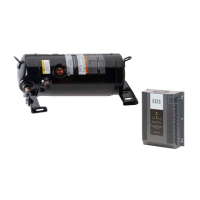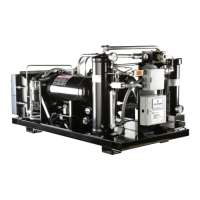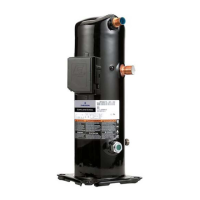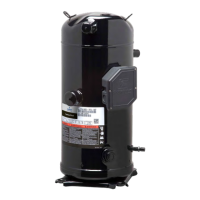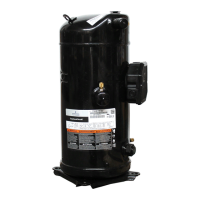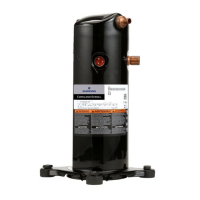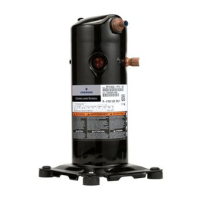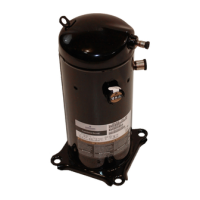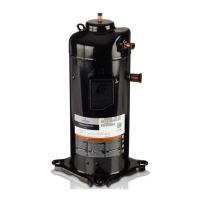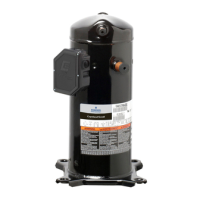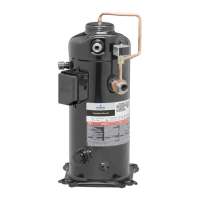22 AGL_HP_VS_YHV2P_E_Rev0
NOTE: For detailed specifications and instructions to connect the high-pressure limiter to the
drive, please refer to the ED3 User Manual (June 2019 version).
4.4.2 Low-pressure protection
WARNING
Operation under ambient pressure! Fire hazard! During operation under
ambient pressure, a flammable mixture can form inside the system. Make sure
that air does not enter the system.
IMPORTANT
Operation outside the application envelope! Compressor breakdown! A
low-pressure protection shall be fitted in the suction line to stop the
compressor when it operates outside the envelope limits.
Applicable regulations and standards shall be followed to apply appropriate control to ensure that
the pressure is always above the required minimum limit.
A low-pressure protection is required to stop the compressor operating outside the published
envelope limits. The low-pressure control must be installed correctly into the suction line, meaning
no service valve between the compressor and the pressure protection is allowed.
In order to avoid any air entering the system during operation, make sure that the system pressure
never falls below atmospheric pressure. If it does, immediately de-energize the power supply of the
compressor and check the cause of the low pressure before restarting the compressor.
In dependence of the approved application envelope, the cut-out setting of the pressure limiter may
be below atmospheric pressure, when observing the following rules:
▪ valid only for hermetically sealed systems, see safety standards for definition
▪ the minimum absolute pressure is 0.5 bar
▪ a discharge temperature control is mandatory to stop the compressor not exceeding the
maximum discharge temperature, see chapter 4.5
4.5 Discharge gas temperature protection
IMPORTANT
Overheating and inadequate lubrication! Compressor damage! YHV*2P
compressors must be equipped with an external discharge gas temperature
protection.
A good system control should prevent the system from operating outside the published operating
envelope and acceptable superheat range, whatever the climatic conditions and the heating demand.
However, under some extreme operating conditions (such as loss of charge or improper control
operation), the internal discharge gas temperature reached can cause compressor damage. To
guarantee positive compressor protection, discharge gas temperature protection is required for any
application with Copeland brand compressors. This protection must not be used as an operating
envelope controller but as a safety device.
The maximum discharge gas temperature is 125 °C for models YHV*2P.
YHV*2P compressors do not have an internal discharge temperature protection. In order for the drive
to operate properly a thermistor must be attached to the compressor discharge line less than 12 cm
from the compressor discharge fitting. For best response the sensor must be insulated and placed
in a sleeve braced on the discharge pipe (see Figure 22). If thermal compound is used to improve
the heat transfer from sleeve to sensor, make sure it is approved for these temperatures. Also protect
the sensor from being removed from its position by transport; vibration or any other incident. Refer
to the operating map for maximum operating discharge line temperatures.
The discharge line temperature must be limited to 125 °C.
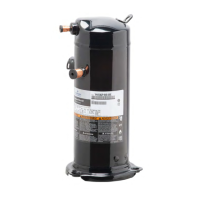
